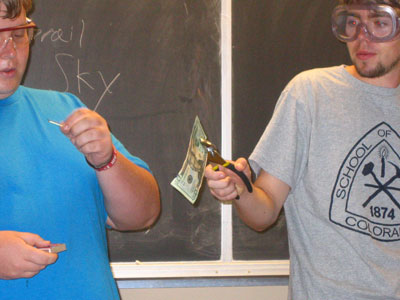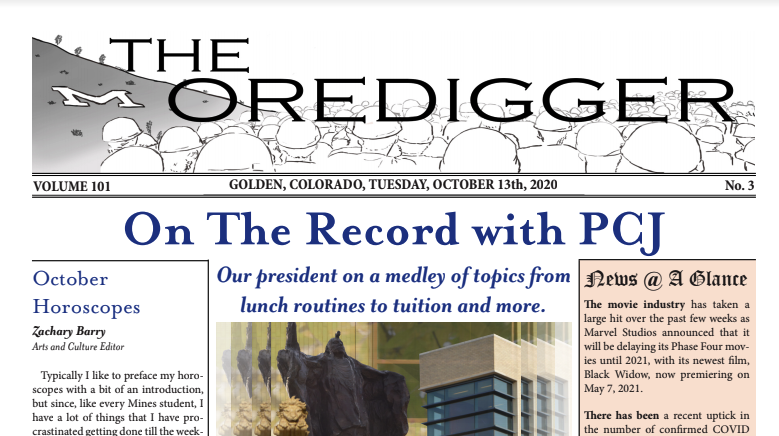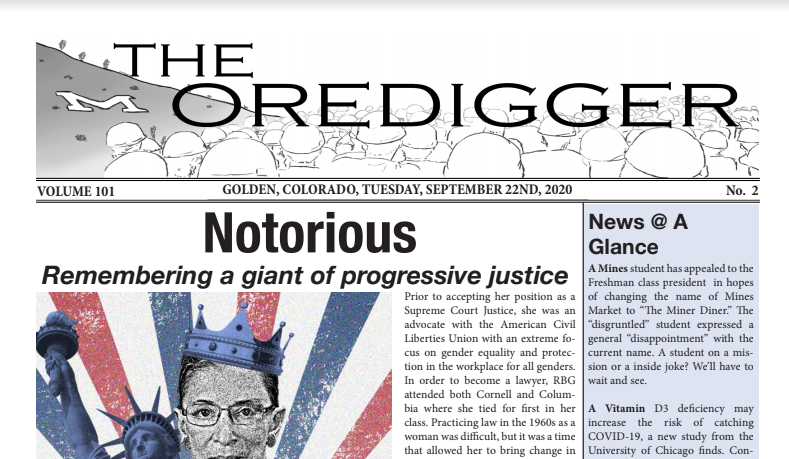{gallery}1011/i4/acs_web/{/gallery}
On Tuesday, September 21, the American Chemical Society held their second meeting to perform some fun demonstrations. Nine demonstrations were chosen which included liquid nitrogen, a luminol reaction, and an oscillating clock reaction. President of the Mines chapter of ACS Matt Hartle stated, “We chose these experiments out of past experience and with a little help from [Dr. Mark] Seger.”
The first demonstration performed was called the blue bottle. This experiment consisted of potassium hydroxide, dextrose (a form of sugar) and methyl-blue solution. This experiment demonstrated an oxidation and reduction reaction. When the solution had plenty of oxygen, the liquid appeared blue, while when oxygen was not present in the solution, it became clear. The next demonstration performed was called the money burn. It began with a member of the audience donating a large bill, such as a twenty. After the money was acquired, it was dipped in an isopropyl alcohol and water solution. Once the money was thoroughly soaked in this solution, it was ignited by a match and, by the wonders of chemistry, the money did not burn. This occurred because the water cooled the burning of the alcohol at the same rate at which the alcohol burned. Unfortunately, by the end of the experiment, the twenty dollar bill had been burned ever so slightly at the tip. Yet another object is sacrificed for the good of science.
The third demonstration was the called the magnesium lantern. This experiment, while simple, is also very difficult to achieve successfully. It required dry ice, which is solid carbon dioxide, and magnesium. The question behind this demonstration is, “How would magnesium burn in a non-oxygen environment?” The answer to this question is, not very well, at first. After many attempts to make the magnesium burn, a substance called potassium chlorate was added to the reaction as a catalyst. Potassium chlorate is a very powerful oxidizing agent. Once the magnesium was lit, a block of dry ice was placed on top of the burning magnesium and it created a beautiful glowing, much like a lantern.
Following the magnesium lantern was fun with liquid nitrogen. Many objects were dipped in the liquid nitrogen such as racquet balls, bananas, oranges, tomatoes, latex gloves, flowers and even gummy bears. Any food dipped in liquid nitrogen can be eaten. Flash frozen gummy bears and bananas taste amazing. The frozen gummy bears taste like a lollipop that quickly becomes gooey in your mouth, while the frozen bananas taste like banana flavored ice cream. After the liquid nitrogen came the oscillating clock reaction. This reaction went through three phases: clear, orange, and purple. The chemicals used were variants of hydrogen peroxide, deionized water, and magnesium sulfate.
Something fun and familiar for any student who was in Seger’s Chemistry I and II classes last year was the oxygen and hydrogen balloon demonstration. For those were not in Seger’s class, this demonstration consists of two balloons. One is filled with hydrogen and the other filled with an oxygen and hydrogen mixture. The idea behind this demonstration is to show which balloon burns faster. The answer is the oxygen and hydrogen mix because that reaction does not have to wait to mix before igniting, while the pure hydrogen balloon does have to wait to mix with air before it can burn.
The cannon demonstration, done after the balloons, is a simple contraption that consists of a reservoir for acetylene gas and an ignition source such as flint. A simple reaction of calcium carbide and water produces the acetylene gas that burns rapidly and makes a loud boom, a sound that is very similar to the exploding hydrogen and oxygen filled balloon.
The luminol reaction, which had never been tested before by ACS, was first attempted at the event. Fortunately, it worked, glowing a neon blue. Unfortunately, it only lasted for a split second. Maybe with more practice, ACS will be able to make the demonstration last longer.
The final demonstration for the night was called the howling gummy bear. This simple reaction required only potassium chlorate and gummy bears. The reaction proceeded by dissolving* the potassium chlorate in water and then dropping the gummy bear into the solution. A large flame erupted from the solution and the gummy bear dissolved, or was shot out of the test tube and converted into a black tar-like substance.
When asked why the ACS performed such as show, Seger responded, “We want to attract new members for ACS. It is just supposed to be a fun night.” Students and other ACS members who attended the demonstrations had a good time. “I mostly came to get away from the long hours of studying and to experience the magical adventures of chemistry,” explains sophomore Kyle Tivnan, “Plus, the experiments were very astute and they included the audience.” If you want to become involved with ACS, come to their next meeting on October 5 in Coolbaugh Hall 219.
*Ed. Note: See the comment on this article for a more correct description of what happened in this experiment.




'ACS demos turn out to be a blast' has no comments
Be the first to comment this post!